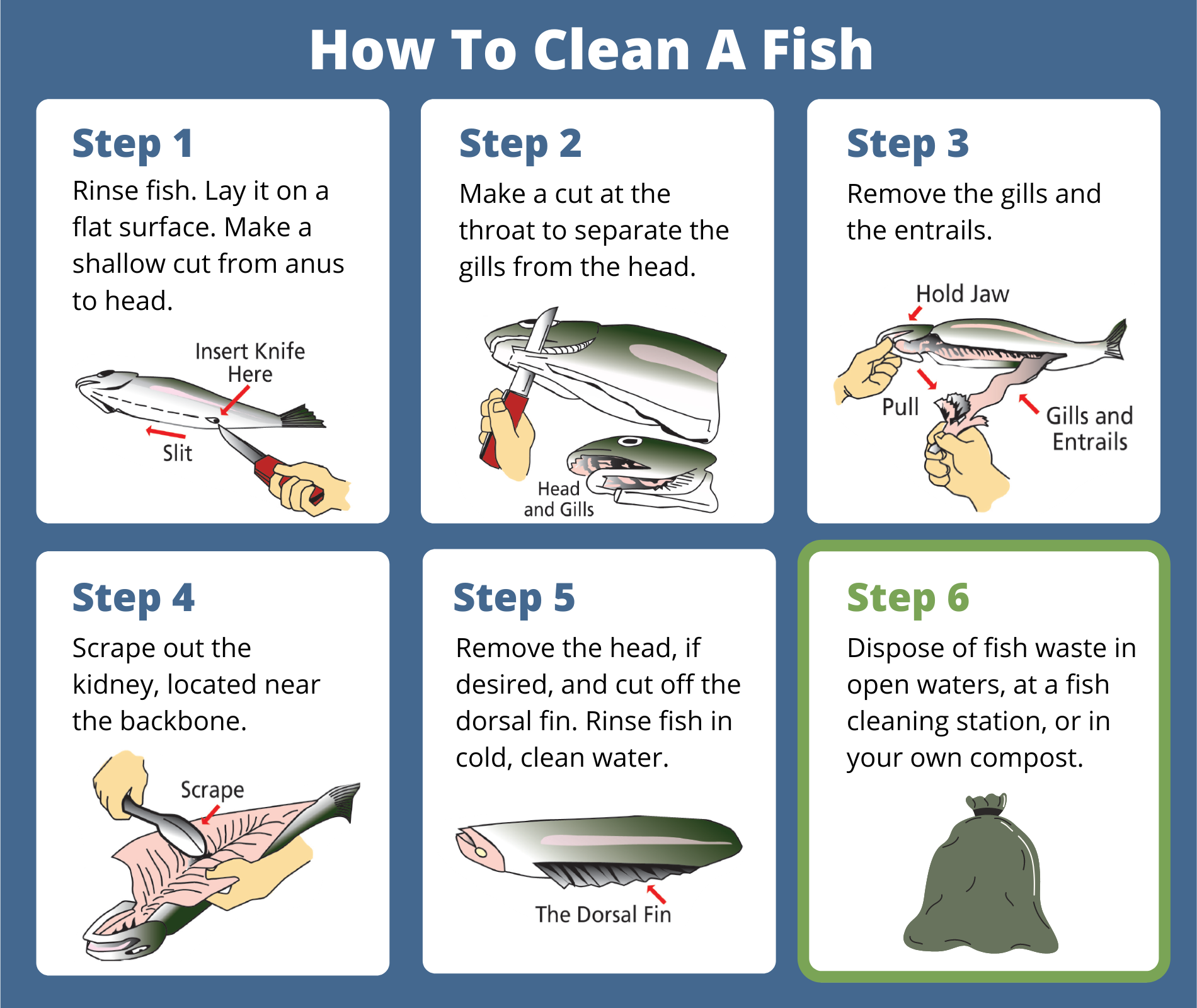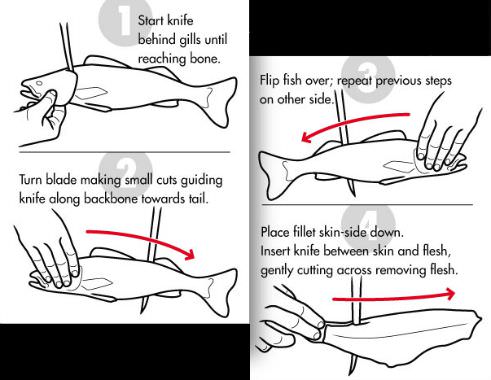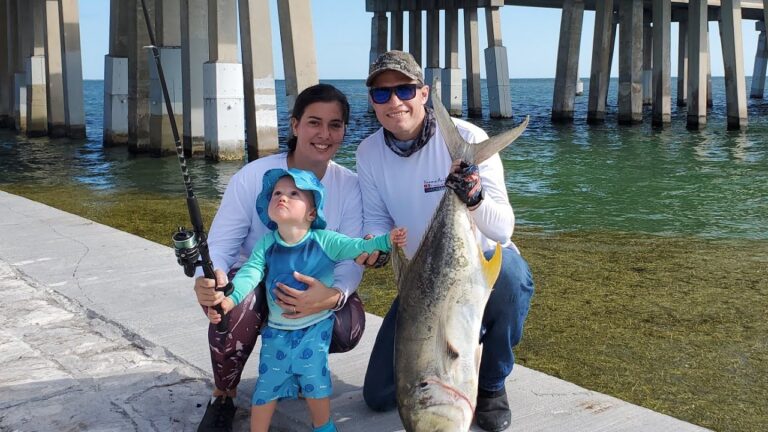How to Fillet a Fish Step by Step: Expert Guide for Beginners
Filleting a fish can seem tricky. But with the right steps, it becomes simple.
Filleting a fish involves removing bones and skin to get clean, boneless pieces. This skill is handy for any home cook who loves fresh fish. You don’t need fancy tools, just a sharp knife and some patience. In this guide, we’ll walk you through each step clearly.
By the end, you’ll feel confident in filleting any fish. Whether you’re preparing a meal or storing fish, this skill will save you time and money. So, let’s dive in and learn how to fillet a fish step by step.
Choosing The Right Fish
Choosing the right fish is the first step in learning how to fillet a fish. Not all fish are the same. Some are easier to fillet than others. Picking the right one can make the process smoother and more enjoyable. Let’s explore how to choose the best fish for filleting.
Freshness Indicators
Fresh fish is essential for a good fillet. Look for clear, bright eyes. The eyes should not be cloudy or sunken. Check the gills. They should be bright red or pink. A fresh fish has firm flesh. Press it gently; it should spring back. The skin should be shiny and moist. Smell the fish. It should have a mild, ocean-like scent. Avoid fish with a strong, fishy odor. These are signs of spoilage.
Best Fish For Filleting
Some fish are better for filleting than others. Flatfish like flounder and sole are great choices. They have a simple bone structure. Round fish like cod, haddock, and salmon are also good. These fish are easy to handle and fillet. Avoid fish with many small bones. They can be tricky to work with. Start with larger fish. They are easier to practice on. Once confident, try smaller fish.
Essential Tools
Learning how to fillet a fish is an essential skill for any angler. To do this successfully, you need the right tools. Without the proper equipment, you risk damaging the fish or injuring yourself. Let’s dive into the essential tools required for this task.
Knives And Blades
The fillet knife is your main tool. It has a thin, flexible blade that allows precise cuts. A sharp blade ensures a clean cut and makes the process safer. Keep a knife sharpener handy. A dull knife can slip and cause accidents.
Some fillet knives come with a serrated edge. These can be useful for tougher parts of the fish. Consider the length of the blade. Larger fish require longer blades, while smaller fish need shorter ones.
Additional Equipment
A cutting board is essential. It provides a stable surface and protects your kitchen counter. Choose a board with grooves to catch any liquids. This keeps your workspace clean.
Pliers are helpful for removing small bones. They give you a good grip and make this task easier. A pair of kitchen shears can also be useful. They help in cutting through tougher parts like fins.
Consider using gloves. They protect your hands and provide a better grip on the fish. This is especially important if the fish is slippery.
Having paper towels nearby is also a good idea. They help in keeping your hands and workspace clean. A clean work area makes the filleting process more enjoyable and efficient.
Preparing The Fish
When it comes to preparing the fish for filleting, there are essential steps to follow. Cleaning and scaling, removing fins and head are crucial before proceeding with filleting.
Cleaning And Scaling
Rinse the fish under cold water. Use a scaler to remove scales. Start from the tail towards the head.
Removing Fins And Head
Trim the fins using kitchen shears. Cut behind the gills to remove the head. Discard the removed parts.

Credit: ecology.wa.gov
Making The First Cut
Learning how to fillet a fish is a valuable skill for any seafood lover. The first step, making the first cut, can seem daunting. But with the right guidance, it becomes easier. Let’s break it down into simple steps.
Positioning The Knife
First, you need to position the knife correctly. Hold the fish firmly on a clean, stable surface. Use a sharp filleting knife for the best results. Place the knife just behind the gills, at an angle.
Cutting Behind The Gills
Next, make a cut behind the gills. Start from the top and move downwards. Cut down until you reach the backbone. Make sure to keep the knife at a slight angle. This ensures you get the maximum amount of meat.
By positioning the knife and cutting behind the gills, you set a strong foundation. The rest of the filleting process becomes much easier. Always use a sharp knife and maintain a steady hand.
Separating The Fillet
Filleting a fish may seem daunting, but it becomes easier with practice. The key to a perfect fillet is in the details. This guide will help you separate the fillet with precision. Let’s dive into the steps.
Following The Backbone
To start, place the fish on a clean, flat surface. Make sure the fish lies on its side.
- Use a sharp fillet knife. Begin cutting just behind the gills.
- Make a shallow cut along the backbone. This ensures you follow the natural structure of the fish.
- Keep your knife angled slightly upwards. This helps avoid cutting into the bone.
- Continue to cut along the backbone. Work your way from head to tail.
Maintaining the correct angle is crucial here. A steady hand ensures a clean cut.
Removing The Fillet
Once you have followed the backbone, it’s time to remove the fillet.
- Insert the knife at the tail end. Slide it between the flesh and the bone.
- Use long, smooth strokes. This helps in keeping the fillet intact.
- As you cut, lift the fillet gently. This makes it easier to see your progress.
- Continue to cut until the fillet separates completely from the bone.
After removing the fillet, check for any bones. Use tweezers to remove any remaining bones.
Repeat these steps for the other side of the fish. With practice, you will get faster and more precise.
| Step | Description |
|---|---|
| Step 1 | Place the fish on its side. |
| Step 2 | Make a shallow cut behind the gills. |
| Step 3 | Follow the backbone from head to tail. |
| Step 4 | Remove the fillet with long, smooth strokes. |
Remember, a sharp knife and steady hand are your best tools. Happy filleting!
Skinning The Fillet
Skinning the fillet involves cutting between the skin and meat. Hold the skin tight and slide the knife gently. This removes the skin cleanly, leaving a smooth fillet.
Starting At The Tail
Removing The Skin
When skinning the fillet, start at the tail. Make a small cut to begin.
Gently slide the knife along the skin, keeping it close to the flesh.
Use a back-and-forth motion to separate the skin from the flesh.
Ensure the knife is angled slightly downward to minimize meat loss.
For an easier grip, use a paper towel to hold the skin as you cut.
Removing Bones
When it comes to removing bones from a fish fillet, it’s crucial to do it properly to avoid any unwanted surprises later on.
Using Tweezers
Start by gently feeling along the fillet to locate any pin bones that may still be present.
With a pair of clean tweezers, carefully grasp the tip of the bone and pull it out in the direction it’s pointing.
Checking For Pin Bones
Before proceeding, run your finger lightly over the fillet to ensure all pin bones have been removed.
If you feel any resistance, use the tweezers to delicately extract any remaining bones.

Credit: www.fishingloft.com
Final Touches
After you have skillfully removed the fillets from your fish, the next steps are crucial. These final touches ensure your fillets are ready for cooking or storing. This part of the process can make a big difference in the quality of your fish dish.
Trimming The Fillet
Now, it’s time to trim the fillet. This step removes any remaining bones and skin. Follow these steps:
- Place the fillet on a clean cutting board.
- Use a sharp fillet knife to gently cut away any visible bones.
- Slide the knife under the skin and carefully separate it from the flesh.
Ensure you remove any dark meat as it can taste strong. Your fillet should now look clean and uniform.
Storing And Cooking
Proper storage keeps your fillets fresh and tasty. Follow these tips:
- Wrap each fillet in plastic wrap.
- Place wrapped fillets in an airtight container.
- Store in the coldest part of your refrigerator.
For longer storage, consider freezing. Here’s how:
| Step | Description |
|---|---|
| 1 | Wrap fillets in plastic wrap and then in aluminum foil. |
| 2 | Place them in a freezer bag, removing as much air as possible. |
| 3 | Label the bag with the date. |
When you are ready to cook, thaw the fillets in the refrigerator overnight. Use simple cooking methods like grilling, baking, or frying to highlight the flavor of your fresh fillet.
:max_bytes(150000):strip_icc()/__opt__aboutcom__coeus__resources__content_migration__serious_eats__seriouseats.com__images__2015__09__20150922-how-to-fillet-fish-first-side-d4af0f6d0c154a12aedbbf2f19f59576.jpg)
Credit: www.seriouseats.com
Frequently Asked Questions
What Tools Do I Need To Fillet A Fish?
You’ll need a fillet knife, cutting board, and fish scaler. Ensure your knife is sharp. A clean workspace is essential.
How Do I Prepare The Fish For Filleting?
Rinse the fish under cold water. Pat it dry with paper towels. Remove scales using a fish scaler.
What Is The First Step In Filleting A Fish?
Start by making a cut behind the gills. Slice down towards the backbone. Ensure you cut through the skin.
How Do I Remove The Bones From The Fillet?
Use tweezers to pull out pin bones. Run your fingers along the fillet to locate them.
Conclusion
Filleting a fish can seem tricky at first. But with practice, it gets easier. Follow each step carefully. Start with the right tools. Make sure your knife is sharp. Take your time. Handle the fish gently. Pay attention to bones and skin.
Soon, you’ll fillet like a pro. Fresh, well-filleted fish tastes amazing. Enjoy your meal!


